Ambiguously Yours, M+ Pavilion, Hong Kong, through 21 May
With a permanent microhome in the form of a pavilion in Kowloon (just a short boat ride from the Hong Kong Convention Centre, home to Art Basel Hong Kong), what will one day be the autonomous territory’s premier arts institution is taking a look at manifestations of local popular culture via representations of androgyny and gender fluidity in Cantopop, fashion, film, photography and graphic design. Of course, the only reason to put on a show about popular culture is in order for it to be popular (for if the culture that you term ‘popular’ turns out to be anything but, you’re going to look like a delusional fool), and so Ambiguously Yours: Gender in Hong Kong Popular Culture will feature some of the territory’s big guns. Among the 90-plus exhibits will be a clip from local hero Wong Kar-Wai’s iconic Chungking Express (1994), as well as the accompanying marketing posters designed by artist Stanley Wong (at the time using the pseudonym Another Mountain Man), whose Red White Blue series (2001–), based on Hong Kong’s famous checked nylon-canvas laundry bags, was popularised following the artist turning it into a costume for Hong Kong musician Sam Hui for a 2004 concert series. Back in the pavilion, look out for costumes worn by Cantopop legends Roman Tam and Anita Mui, as well as more recent creations modelled by singer and actor Denise Ho. On show too will be Singaporean Ming Wong’s explorations of gender fluidity and various forms of cultural appropriation in popular cinema in an exhibition that promises to be as fascinating for its tracking of the flow of ideas through different media as it is on the more voguish topic of gender fluidity (and needless to say, that kind of fluidity was in fashion among Hindu deities – from the androgynous Ardhanarishvara, to Vishnu’s avatar Mohini, and many more – well before it reached popular status in the contemporary artworld or in Hong Kong).

Nguan, FOST Gallery, Singapore, through 12 April
But enough with theology. If Chungking Express is a study of loneliness in one of the world’s most densely populated areas, then photographer Nguan explores a similar theme in another crowded city-state. How Loneliness Goes, the artist’s first solo show at Singapore’s FOST Gallery, features a series of achingly beautiful photographs first collected under that title in a 2014 publication. A melancholic study of the city and its people, and the frequent disconnect between the two – images feature workers asleep on public benches, empty swings, colourful staircases, a face in a crowd, an elderly lady on a beach, among other things – the photo series, which at FOST will include several new images, constitutes one of the iconic portraits of contemporary urban life. ‘My wish is for this book to wander in my stead, exist as a testament to existence and credibly proffer the possibility of beauty as a balm for everyday sorrow,’ the artist intoned in a postscript to the original publication.
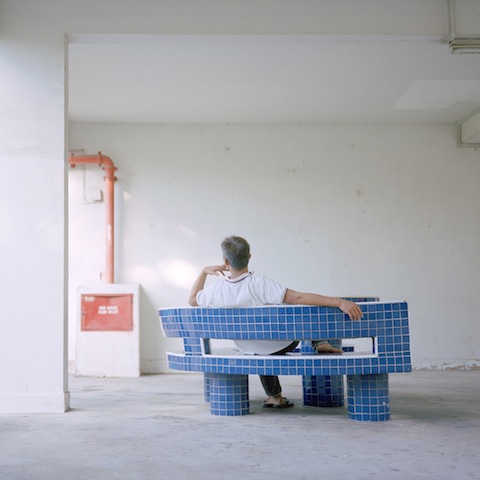
He An, Australian Centre for Contemporary Art, Melbourne, through 23 April
The urban landscape, intertwined with the forces of love and desire, also serves as a generative force in the work of Beijing-based He An, whose longstanding practice consists of ‘collecting’ characters from the signs that light up his hometown. ‘In the city, what we say in our little apartment is not important,’ he chants. ‘What is important is the words the neon lights project onto us.’ Depressing you might well think. But like Nguan, He An finds a beauty amidst the urban pain, using the characters to create new texts, messages and his own form of concrete urban poetry. His Do You Think That You Can Help Her Brother? (2008–9) is one such text, assembled on the northern facade of the Australian Centre for Contemporary Art in Melbourne. It features a narrative that loosely translates as: ‘Ye Chang-gui says “Miho Yoshioka’s birthday is only one day before my birthday”. After a long time turning tricks [or whoring] with a young man, they fall in love. […] Do You Think That You Can Help Her, Brother?’, but – and here’s the thing with He’s work – you have to rely on someone else’s word to tell you this unless you are a fluent reader of Mandarin. The artist may have removed his characters from specific sites, but they retain a specificity of context and language nonetheless.
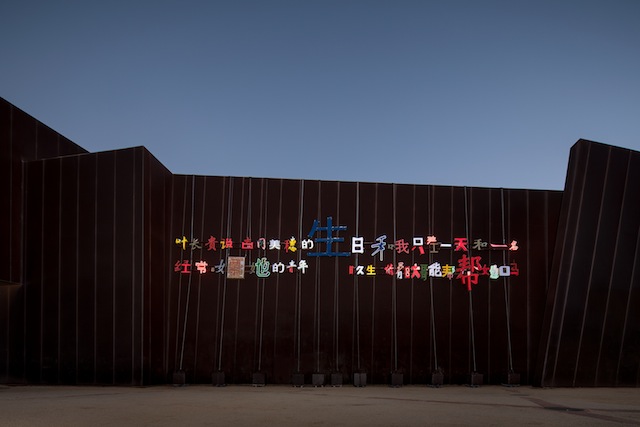
Vikram Divecha, Gallery Isabelle van den Eynde, Dubai, through 11 May
Also working with public sites, albeit in a completely different fashion, is Dubai-based, Beirut-born, Mumbai-bred artist Vikram Divecha, whose Minor Works are on show at Gallery Isabelle van den Eynde in his current home base. Divecha operates with what he calls ‘found processes’ in institutions, infrastructures and communities, intervening to introduce glitches and obstructions to the normal flows. For his Warehouse Project (2016), with Dubai’s Alserkal Avenue, for example, he bartered his exhibition space (a former warehouse now dedicated to cultural activities) with a trading company requiring storage facilities, leaving only the boxed goods (toys made in China) and their movements in, within and out of the space on display. Here he exhibits works – among them a series of paintings created with a road-marking crew in Dubai to a map of the daily routes of road-sweepers around the Sharjah Art Museum – that pay tribute to the labour of his collaborators on those projects, casting a spotlight on ‘minor’ tasks that are taken for granted or overlooked.
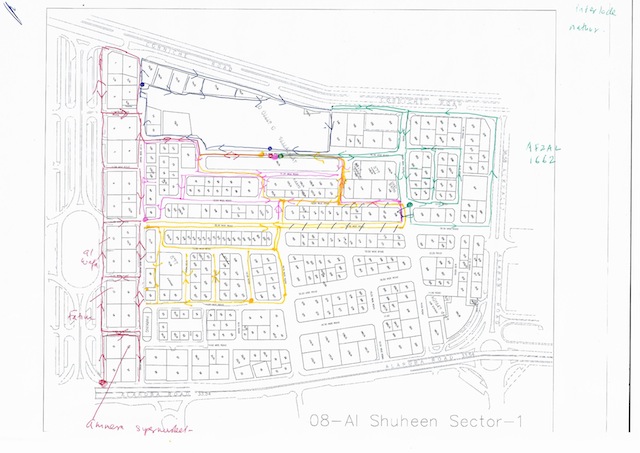
Agung Prabowo, Mizuma Gallery, Singapore, through 26 March
Also fusing cultural and commercial consumption is Bandung-based Indonesian artist Agung Prabowo (aka Agugn). At Mizuma Gallery’s outpost in Singapore he’s playing with his food: more specifically molasses. In general the artist’s work often involves an exploration of his own fears and personal history (which is sometimes attributed to the greater freedoms for self-expression in postreformation Indonesia). Although the artist’s father cultivated sugar cane in the village where he was raised, Agugn only tasted the crop’s viscous byproduct last year, when it was prescribed as a treatment for a mysterious 24-day fever. In his first solo show with the gallery, he exhibits a set of (often colourful) linocut prints that examine the metaphorical and literal properties of the black treacle. Expect sweetness. And darkness. And a focus on the digestive tracts of the human body.

Rebel, Jester, Mystic, Poet: Contemporary Persians, Aga Khan Museum, Toronto, through 4 June
From postreformation to postrevolution and Rebel, Jester, Mystic, Poet: Contemporary Persians, a group exhibition featuring works by 23 artists from the private collection of British-Iranian Mohammed Afkhami, on show at the Aga Khan Museum in Toronto. The artists Afkhami collects span various generations and media, and include well-known practitioners such as Shirazeh Houshiary, Y.Z. Kami, Abbas Kiarostami, Farhad Moshiri (who has an October exhibition at the Andy Warhol Museum in Pittsburgh) and Shirin Neshat. All are linked by their quiet subversion of the traditions, conventions and stereotypes that populate the world around them. Moshiri’s Flying Carpet (2007), for example, consists of 32 variously kitsch machine-made Persian rugs stacked in a pile, their centres cut out according to the shape of a jet fighter, these then stacked in a second pile next to the rugs. Iconoclast!
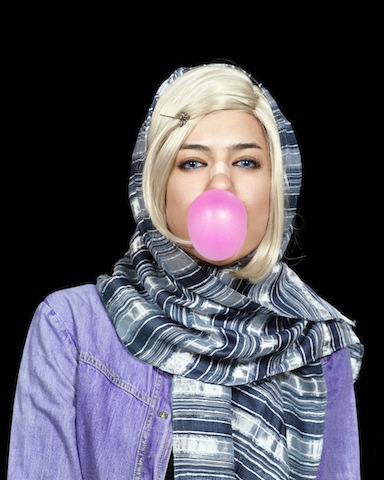
RIVERRUN: dis/continuous writing on history, memory and spirit, Taipei Fine Arts Museum, through 4 June
A less straightforward reclamation of history is going on at the Taipei Fine Arts Museum (TFAM) in the form of RIVERRUN: dis/continuous writing on history, memory and spirit, although anyone who saw Corinne Diserens’s 2016 Taipei Biennial will know that overly complex discourse and complex exhibitions are becoming something of a staple at TFAM. That wasn’t necessarily all bad in the case of the biennial. RIVERRUN takes its title from a reference in James Joyce’s hilarious comic novel Finnegan’s Wake (1939), proudly remarking that the Irishman ‘used sentence structures that are difficult to understand and no punctuation, but [that] in art and literature, liberating and diverging are all permitted, and can even be raised to the level of inspiration’ – crikey! a lot of punya needed here then. The exhibition itself looks at the lasting psychological damage caused by the White Terror – the 38-year period of martial law following 1947’s February 28 Massacre of civilians by the republic’s Kuomintang-led government – via works (no advance details as to which ones) that reconstruct history and explore the links between collective and individual consciousness.
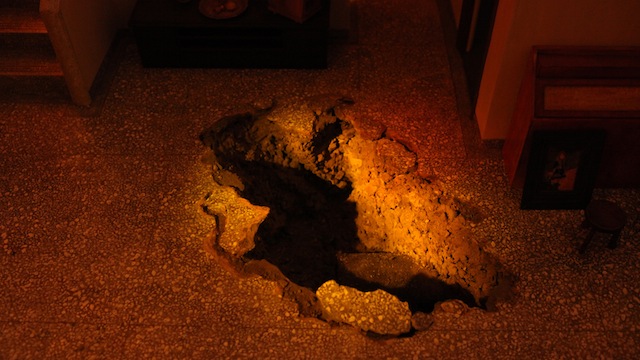
Võ Trân Châu, San Art / Manzi Art Space, Hanoi, through 13 May
Psychology and history are also at play in Võ Trân Châu’s first solo exhibition, Lingering at the Peculiar Pavilion, at the Manzi Art Space in Hanoi. Originating out of a six-month residency at the San Art Laboratory in 2015, the exhibition includes a remaking of the Nguyen emperor’s ritual garment out of patches of fabric gathered by the artist from descendants of the dynasty (the last emperor, Bao Đai, abdicated in 1945 and died in 1997), offering another fusion of collective and individual personalities. Patchwork (and indeed mosaic) remains a theme through the rest of the exhibition, which also features an imaginary version of the city of Hue (home to the Nguyen court) and a general vision of Vietnam’s past through its present. Or perhaps, indeed, that should be the other way around.

Line of Times, Mill 6 Foundation, Hong Kong, through 2 April
The Mill 6 Foundation is a (‘fund-seeking’) not-for-profit arts organisation housed in Hong Kong’s Nan Fung Textile Mills. The renovation of this heritage conservation space is due to be completed next year, but in the buildup to that moment the foundation (which spouts the usual niceties about helping creative Hong Kongers to look out to the world and their international counterparts to look in) is producing a series of warm-up exhibitions. In March that takes the form of Line of Times, an exhibition featuring works by Brooklyn-based Aziz + Cucher, Taiwan’s Yin-Ju Chen and local boy Morgan Wong. In their distinct ways, each artist (or pair of artists) will be attempting to investigate time in its linear and nonlinear forms. Aziz + Cucher take inspiration from tapestry, Chen (best known as a video artist) looks at the influence of the cosmos on human behaviour and Wong (whose work often takes the form of durational performance – such as the self-explaining Filing Down a Steel Bar Until a Needle Is Made, 2013–63: presumably that timeline is pure guesswork) looks at the impact of time on moments in his everyday life.
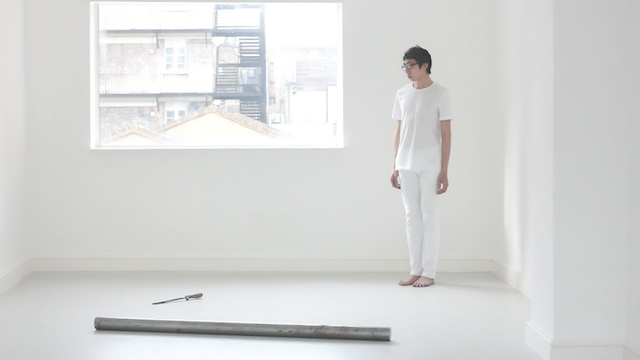
Fiona Tan, Tel Aviv Museum of Art, through 24 June
All of which chronological foolery leads us triumphantly to Fiona Tan’s Geography of Time, on show at the Tel Aviv Museum of Art (having travelled there via Gateshead, Oslo and Frankfurt), which explores similar themes through the medium of video, photography and installation. Born in Indonesia to Australian and Chinese parents, Tan grew up in Australia and currently lives in Amsterdam. And a similarly complex interplay between East and West forms the basis of works such as the video installation A Lapse of Memory (2007), set amidst the chinoiserie (concocted by people who had never seen China) of George IV’s Brighton Pavilion. More than that, however, Tan’s work focuses on memory, archives, collecting and the many ways in which humans represent their pasts and their relationship with the natural world (with marine biology a favourite theme). More even than that, she’s a consummate filmmaker. On which note, time’s up: ArtReview Asia’s off to get some milk for its yagya. Om.
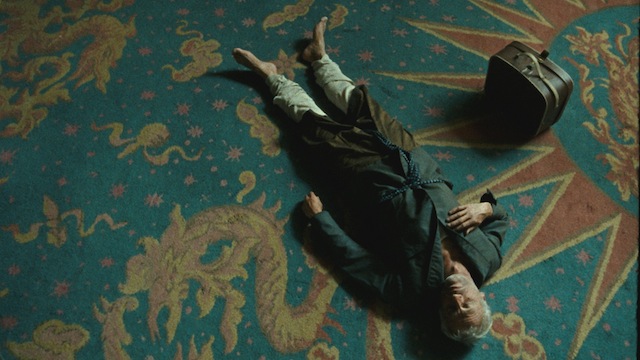
This is Part II of ‘Previews’, from ArtReview Asia Spring 2017. Read Part I here
